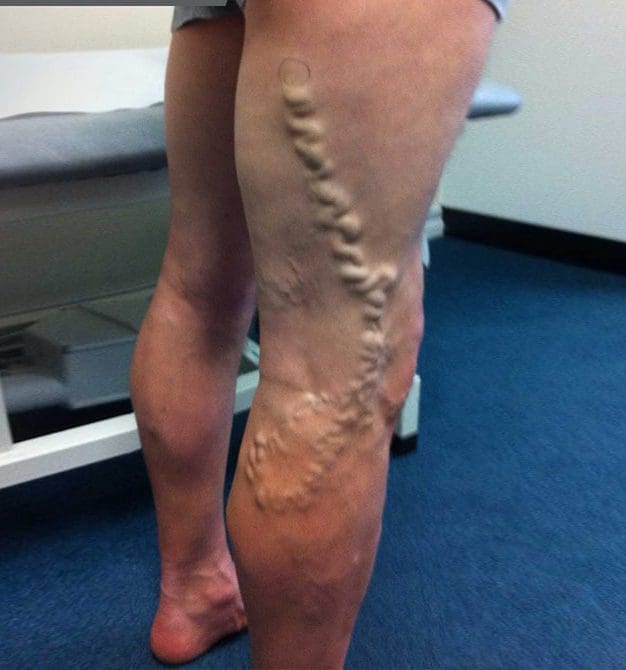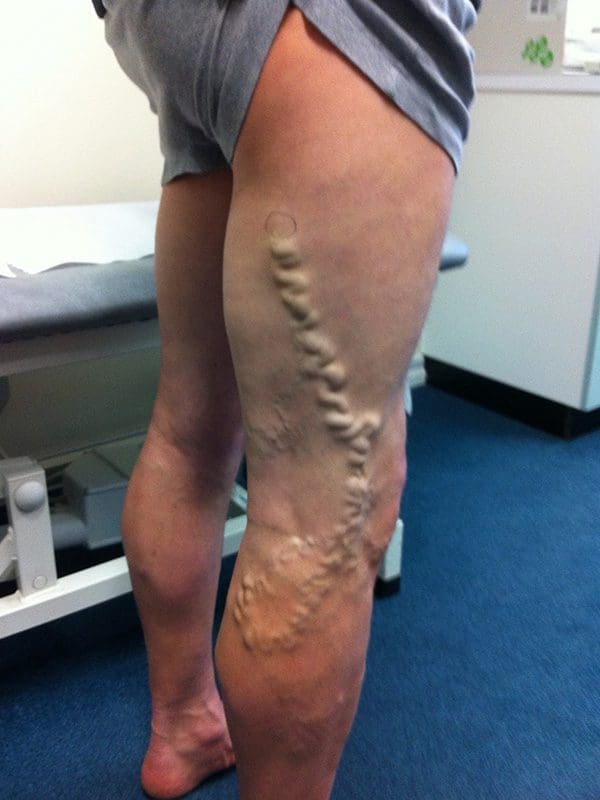What Are Varicose Veins?
Varicose veins are a common venous condition that affects millions of people worldwide. They are characterised by enlarged, twisted, and often bulging veins that typically appear on the legs. Understanding what varicose veins are and the factors contributing to their development is crucial for both prevention and effective treatment.
Anatomy of Veins:
To comprehend varicose veins, it’s essential to have a basic knowledge of the circulatory system. Veins are blood vessels responsible for carrying deoxygenated blood back to the heart. Valves within the veins prevent blood from flowing backwards and maintain a one-way flow towards the heart.
Causes of Varicose Veins:
Varicose veins develop when the normal functioning of these valves is compromised. Several factors can contribute to the formation of varicose veins, including:
Weak Vein Walls:
Over time, the walls of veins can weaken, making them less able to maintain their shape. This weakening can lead to vein enlargement and pooling of blood.
Valve Dysfunction:
If the valves within the veins become damaged or fail to close properly, they allow blood to flow backwards, leading to increased pressure in the vein and causing it to dilate.
Heredity:
A family history of varicose veins can increase the likelihood of developing the condition. Genetic factors can play a significant role in the weakening of vein walls and valves.
Age:
The risk of varicose veins tends to increase with age, as wear and tear on veins can accumulate over time.
Pregnancy:
Pregnancy can exert pressure on the veins, potentially leading to the development of varicose veins. Hormonal changes during pregnancy can also affect vein walls and valves.
Obesity:
Excess body weight places added pressure on the lower extremities, making it more likely for veins to become enlarged and varicose.
Common Symptoms of Varicose Veins
Visible, Enlarged Veins:
The most obvious sign of varicose veins is the appearance of dilated, twisted, and bulging veins, often with a blue, purple, or greenish colour. They can be easily seen through the skin, most commonly in the legs, but varicose veins can also appear in other areas of the body.
Aching or Throbbing Pain:
Many individuals with varicose veins experience aching or throbbing pain in the affected areas. This discomfort often worsens after prolonged periods of standing or sitting. The pain can range from mild to severe and may be accompanied by a feeling of heaviness in the legs.
Swelling:
Varicose veins can cause swelling, particularly in the lower legs and ankles. This swelling is a result of increased pressure within the veins, leading to fluid retention in the surrounding tissues.
Itchiness and Burning Sensations:
Itchy or burning sensations over or near the varicose veins are common symptoms. This discomfort may be persistent or intermittent and can contribute to overall discomfort.
Leg Fatigue:
Individuals with varicose veins often experience a sensation of leg fatigue or heaviness, especially at the end of the day. This can affect one’s ability to engage in physical activities or even carry out daily tasks.
Restless Legs:
Restless legs syndrome (RLS) is a condition where individuals have an uncontrollable urge to move their legs, often accompanied by unpleasant sensations. Varicose veins can exacerbate or contribute to RLS symptoms in some cases.
Skin Changes:
Over time, varicose veins can lead to changes in the skin surrounding the affected area. This may include skin discolouration, redness, or the development of brownish pigmentation. In severe cases, skin ulcers, known as venous ulcers, can form.
Complications:
If left untreated, varicose veins can lead to more serious complications, such as phlebitis (inflammation of the veins), deep vein thrombosis (DVT), and bleeding from ruptured veins. Although these complications are less common, they underscore the importance of early diagnosis and management.


How we Treat Varicose Veins
The treatment of varicose veins is tailored to the severity of the condition and the symptoms experienced by the individual. Several treatment options are available, ranging from conservative measures to minimally invasive procedures and, in more severe cases, surgical interventions. Here, we’ll discuss the various approaches to treating varicose veins.
Lifestyle Modifications:
Exercise: Engaging in regular physical activity, particularly exercises that work the calf muscles, can help improve blood circulation and alleviate the symptoms of varicose veins.
Weight Management: Maintaining a healthy weight reduces the pressure on the veins in the legs, which can prevent or ease the development of varicose veins.
Elevating Legs: Elevating the legs when resting or sleeping can help reduce swelling and discomfort.
Compression Stockings:
Compression stockings are often recommended as a conservative treatment for varicose veins. These specially designed stockings apply gentle pressure to the legs, helping to improve blood flow and reduce swelling and pain.
Sclerotherapy:
Sclerotherapy is a minimally invasive procedure that involves injecting a solution directly into the affected vein. This solution irritates the vein lining, causing it to collapse and eventually fade away. Sclerotherapy is particularly effective for smaller varicose veins and spider veins.
Endovenous Laser Ablation (EVLA):
EVLA is a minimally invasive procedure that uses laser energy to seal off and collapse the problematic vein. It is often used for larger varicose veins and offers the advantage of minimal scarring and a shorter recovery period.
Radiofrequency Ablation (RFA):
Similar to EVLA, RFA is a minimally invasive procedure that employs radiofrequency energy to close off the affected vein. This method is known for its effectiveness in treating larger veins.
Venaseal Closure:
Venaseal closure is a relatively newer minimally invasive technique that uses a special adhesive to seal off the faulty vein. This procedure does not require the use of heat or chemicals and is associated with a low risk of complications.
Surgical Procedures:
In more severe cases or when other treatments have not been effective, surgical interventions like vein stripping and ligation may be considered. These procedures involve physically removing or tying off the problematic vein.
Ambulatory Phlebectomy:
Ambulatory phlebectomy is a surgical technique that is less invasive than traditional vein stripping. It involves the removal of varicose veins through tiny incisions, typically leaving minimal scarring.
What's The Benefits of Non-invasive procedures
Minimal Discomfort:
Non-invasive procedures are generally associated with minimal to no pain. This translates to a more comfortable experience for patients during and after the procedure.
Reduced Recovery Time:
Recovery periods for non-invasive procedures are typically shorter than those for invasive surgeries. Many patients can resume their daily activities soon after the procedure, promoting a quicker return to normal life.
Lower Risk of Complications:
Non-invasive techniques often carry a lower risk of complications, such as infections, bleeding, or adverse reactions to anaesthesia, which are more common with invasive surgery.
No Scarring:
Since non-invasive procedures do not require surgical incisions, they leave no visible scars. This is especially important for individuals concerned about their appearance after treatment.
Decreased Infection Risk:
The absence of surgical incisions reduces the likelihood of infection, making non-invasive procedures a safer option, particularly for those with compromised immune systems.
Cost-Effective:
Non-invasive procedures are typically more cost-effective than invasive surgery. They often require shorter hospital stays, if any, and entail fewer expenses related to anaesthesia and surgical equipment.
Outpatient Options:
Many non-invasive procedures can be performed on an outpatient basis, allowing patients to return home the same day, without the need for extended hospital stays.
Minimal Anesthesia:
Non-invasive procedures often require only local anaesthesia or sedation, which is generally safer than general anaesthesia used in many surgical procedures.
Warning: Trying to access array offset on value of type bool in /var/www/vhosts/benvilleveinpractice.com/httpdocs/web/app/uploads/cache/192881d4a76d8489467e386f9686b6ffa976c4bc.php on line 16
Why Choose us
At Benville Vein Practice, we understand that your health and well-being are of utmost importance. We take pride in offering state-of-the-art vein care services, with a particular emphasis on non-invasive procedures. Here’s why you should choose us for your vein health needs:
- Expertise in Non-Invasive Procedures
- Customised Treatment Plans
- Reduced Discomfort and Recovery Time
- State-of-the-Art Technology
- Comprehensive Patient Care
- Proven Results
- Patient Satisfaction
Choosing Benville Vein Practice means choosing a trusted partner for your vein health needs. With our focus on non-invasive procedures, you can expect effective, comfortable, and personalized care that will help you achieve optimal results. Your journey to healthier veins starts with us.
Enquire Now